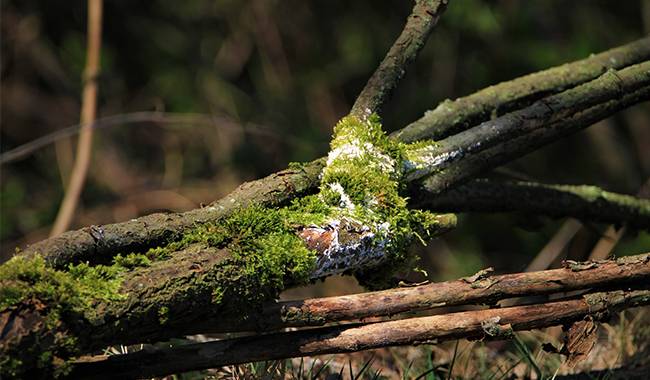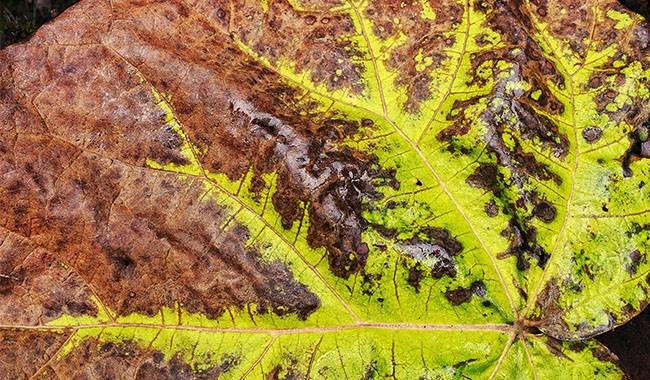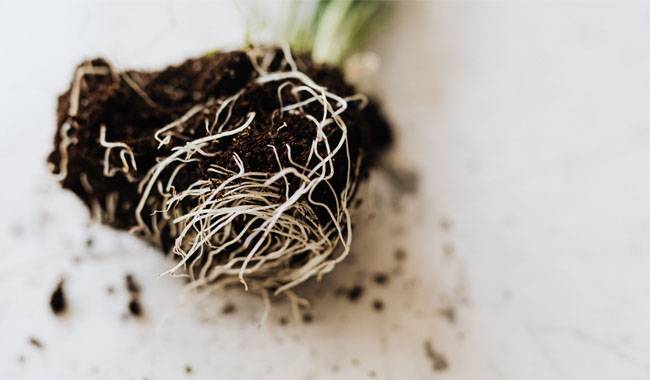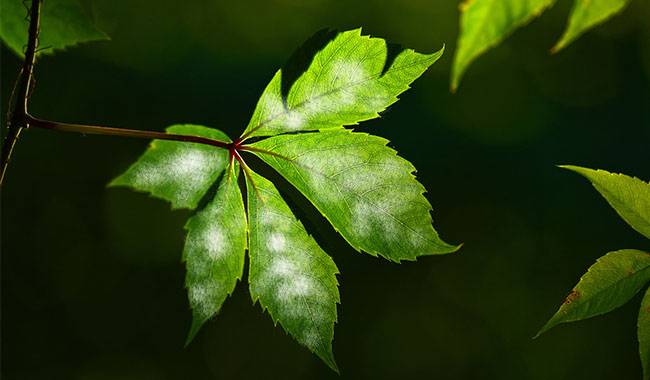
In addition to pests, fruit crops are often affected by a variety of diseases. powdery mildew is one such disease. Although apparently harmless, it is actually a rather dangerous fungal infection. powdery mildew is perhaps the most common fungal disease that occurs on literally all crops: flowers, vegetables, berries, and even fruits.
The disease is caused by the fungus Powdery mildew (Erysiphales). In fruit crops, this fungal infection mainly affects the leaves but also occurs on shoots, flowers, and even fruits. It is the subject of this article.
POWDERY MILDEW ON FRUIT CROPS – WHAT IS THIS DISEASE?
In the initial stages of development, the marsupial fungus begins to form a fungus, which attaches itself to leaves (shoots, fruits, etc.) with appendages and emits trichomes into their tissues. Moreover, as it develops, the Powdery mildew fungus begins to develop quite abundant conidia on the affected leaf plates (buds and others) of fruit crops, eventually forming cleistothecia with pouched and sac-like spores.
Most interestingly, even after the natural death of leaves (fruits), Powdery mildew fungus often does not die and it is well preserved in soil, plant residues, or under old bark. With the onset of warmth, the fungus becomes active and spreads quite aggressively through the plants, infecting them with conidia. Usually, 4-10 days pass from the moment of Powdery mildew infection to the appearance of white patches containing conidia on the surface of the leaf layer.
The speed of infection depends on the weather, soil and air humidity, the age of the plant, and its general condition. The spores usually develop to full maturity within a month and a half or two to three months, and rarely for long. It has been noted that Powdery mildew develops more actively in warm weather when there is sufficient moisture in the soil and air, and that fruit crops are less resistant to Powdery mildew during such seasons.
CAUSES OF POWDERY MILDEW
Powdery mildew is an infection that is easily spread through the air. In fact, it is almost always present in the air, but in order for the infection to start developing on leaf discs (fruit, shoots, etc.), you need a combination of several factors.
For example, Powdery mildew develops most actively in temperature corridors of 60-80°F (16-27°C) if the humidity is within 65-85%.
Large-scale occurrence of Powdery mildew in fruit crops is associated with.
- frequent and sudden temperature fluctuations.
- Strong rejuvenation pruning, which weakens the immunity of the fruit crop.
- Excessive nitrogen fertilization, which increases the concentration of nitrogen in the soil.
- Densely planted fruit crops that do not allow free circulation of air masses and prevent natural evaporation of water from the leaves and soil surface.
- Irrigation irregularities, over-watering of the soil, or, on the contrary, very low frequency of watering.
SYMPTOMS OF POWDERY MILDEW
Powdery mildew usually appears on fruit crops in the spring and early summer, i.e. in the first half of the warm season. The first affected leaflets (buds) on fruit crops can already be found at the bud emergence stage. As we have already mentioned, Powdery mildew is most often found on the leaves of fruit crops, but it is also frequently found on shoots.
In some years, when the outbreak of fungal infection is particularly strong, Powdery mildew can be found on the inflorescence; look closely and you can see a very dense white-blue coating there, which causes the inflorescence to become visibly deformed, wilted, and partially or completely detached.
At first, a white patch also forms on the shoots, and over time, as the Powdery mildew volatile spores mature, it turns brownish-gray, darkening with the fungal cleavage that forms on it, looking like black spots.
White-gray patches also appear on leaves and petioles, but over time it does not turn black, but more often – reddish. the development of Powdery mildew fungus on leaves causes them to grow sluggishly, curl, usually along the central vein, wilt and fall off much earlier than it should.
Powdery mildew may appear on the fruit at the beginning of fruit formation; a pale white coppery green color can also be seen there, although this soon disappears, leaving a rusty web, much like the effects of hail or other machinery on the fruit.
Interestingly, in the early stages of development, Powdery mildew on any plant organ can be removed with a simple cloth or other means without leaving a trace, but just a few days later, the spots reappear in the same place and have become more severe in size.
If no action is taken, the fungus will eventually become denser and take on a brownish color. Fruit crops affected by Powdery mildew are severely stunted in growth and development, or these processes are severely slowed, with the leaf layer wilting and falling off before maturity, echoing flowers and buds.
DISTRIBUTION OF POWDERY MILDEW
Powdery mildew is widespread in the United States, within Canada, in neighboring countries of Europe, and in the Baltic States. powdery mildew is most active in Almaty, Central Asia, Kazakhstan, Transcaucasia, and also in Armenia and Moldavia.
There, the disease infests fruit trees to the extent of 90%. powdery mildew usually infests fruit crops to the extent of no more than 60%; in the Baltic and Black Earth region countries, powdery mildew infests 40%.
THE HARMFUL EFFECTS OF POWDERY MILDEW
If Powdery mildew is weak, you will hardly notice any damage, but if it develops very well, it can be very serious and measurable. As we have already said, the whole plant can be affected by Powdery mildew.
Trees affected by Powdery mildew will be weakened, their immunity will be depleted, and growth and development will be affected, or not grow at all. Affected leaf flakes will shed much earlier, and affected flowers and ovaries will fall off.
If shoots are affected by Powdery mildew at the earliest stages of their development, their tips will begin to shrivel or become deformed. Depending on the degree of development, the yield can drop from 10-15% to 60%.
In addition to the visible negative signs, Powdery mildew also has invisible effects on the plant. For example, plants affected by Powdery mildew have significantly reduced winter hardiness, and often young shoot tips and flower buds become extinct.
The dangers of Powdery mildew are particularly present in nurseries, where seedlings grow in close proximity to each other and the disease can actively spread to neighboring plants.
PREVENTIVE MEASURES AGAINST POWDERY MILDEW
As you know, it is much easier to prevent any disease than to treat it, and Powdery mildew is no exception here. To minimize the risk of Powdery mildew in fruit crops, it is necessary to follow a planting schedule, not to overplant, and to do moderate watering – only when needed and not to over-water the soil.
Pruning also helps prevent Powdery mildew because it thins the canopy and prevents overgrowth. In addition, you need to keep the root zone tidy: remove trash and plant debris, loosen the soil and remove weeds. Do not allow weeds to grow near the fruit crop; in this case, weed or treat the weeds with herbicides.
In order to prevent Powdery mildew, it is necessary to use chemical preparations for fruit crops, such as fungicides, i.e. preparations for the prevention and control of fungal infections, but also more environmentally friendly preparations containing copper sulfate, Bordeaux mixture, copper chloride, etc.
Preventive treatments for Powdery mildew should be applied at least three times per season, starting in early spring and ending in late autumn.
It helps to improve the immunity of the fruit crop and strengthen the resistance to Powdery mildew and chemical fertilizers. Therefore, it is advisable to make potash and calcium superphosphate in the soil (usually 15-20 g per tree).
EFFECTIVE POWDERY MILDEW CONTROL MEASURES
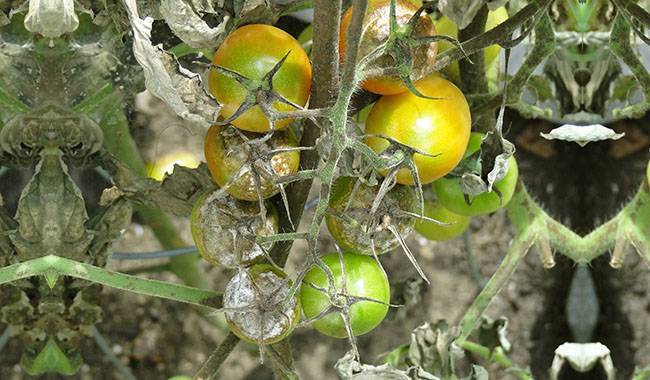
If Powdery mildew infests a fruit crop, then you should not delay the fight against it and start as soon as you notice the characteristic white powder spots appearing. Here, it is important to pay attention to the fruit ripening period, if it is less than three weeks, you should not use chemicals, fungicides contain harmful substances that can accumulate in the fruit.
Usually, control of diseased fruit crops is carried out when Powdery mildew appears three to four times in a season. As we have already mentioned, copper-containing preparations or more effective fungicides – such as Topaz – can be used for this purpose.
As soon as the first organ affected by Powdery mildew appears on the fruit tree, it should be treated with this preparation or another approved fungicide, alternating every 7-11 days until the signs of fungal infection are completely gone.
In addition to chemical agents that are harmful to the environment, there are many perfectly safe, but equally effective, folk remedies to combat Powdery mildew. these remedies are particularly effective if the plants are still small so that the entire flora can be treated as thoroughly as possible. In addition, folk remedies can be used even during periods when the use of fungicides is prohibited for safety reasons.
Perhaps the most common Powdery mildew treatment is a solution of baking soda and soap. To obtain it, dissolve 60 grams of ordinary cooking soda and 30 grams of antibacterial soap in a bucket of water at room temperature. Thereafter, you must treat the fruit crop affected by Powdery mildew three times, at intervals of 7-8 days.
Whey solution has been proven to be a good Powdery mildew control agent. To obtain it, dilute 0.26 Gal whey in a bucket of water at room temperature, then stir the solution well and treat affected plants four times at 3-day intervals in dry weather only.
Kefir milk can also help with Powdery mildew. to obtain this solution, take 0.26 Gal of yogurt or well-fermented yogurt, dissolve it in a bucket of water, and treat the plants three times at four-day intervals.
It helps to cope with Powdery mildew, especially on young trees, and the decoction of field horsetail. You need to take 150 grams of horsetail, pour 0.4 Gal of water, leave it for 30 hours and then boil it on low heat for 15 minutes.
All that remains is to cool the broth, strain it and dilute it with water five times, you can spend them at intervals of 3-4 days for up to 5 treatments. It is worth remembering that this decoction can be stored in a cool place, not exposed to light, for no more than ten days.
For slight damage to fruit crops by Powdery mildew, the mustard solution helps to cope with it very well. To prepare it, you need to take two tablespoons of mustard powder and dissolve it in a bucket of water at room temperature. Then you can treat the plants with this solution until the Powdery mildew disappears.
If there is not much Powdery mildew on the plant, a solution of manganese will also help to eradicate Powdery mildew. you need to take 6-7 grams of common medicinal manganese and dilute it in a bucket of water. With this solution, in addition to shoots and leaf plates, you can also treat ripe fruits affected by Powdery mildew.
The ash solution is most effective on young plants with mild Powdery mildew infestations. It is also a good foliar feeder of potassium fertilizer and trace elements.
To prepare the solution, you need to dissolve about 800 grams of wood ash in a bucket of water at room temperature and leave it for five days. After this, you need to add 30 grams of liquid antibacterial soap to the solution, filter the solution and continue treating the affected plants.
Another infusion that can be used both as a foliar fertilizer and to control Powdery mildew is the infusion for cowpeas. To obtain it, 2.2Lb of cowpea, pour 2.6Gal of water, and leave it for three days. The infusion should then be filtered and diluted twice to treat the affected plants. This infusion is most effective on Powdery mildew before flowering.
Onion husk, its infusion is also fertilizer and medicine against Powdery mildew. It is necessary to take 300 grams of onion shells and pour 2.6 Gal of steep boiling water over them. After that, the container should be tightly covered with a lid and allowed to persist for 48 hours.
After this time, the solution is filtered and used to control Powdery mildew. this treatment is particularly effective before and after flowering and before the fall of leaves.
Generally speaking, Powdery mildew is not that dangerous a disease if one follows the garden with some knowledge of this disease. The information in this brochure is sufficient to detect and eliminate Powdery mildew, or to prevent Powdery mildew in your own plants.
More related information about Plant Diseases





